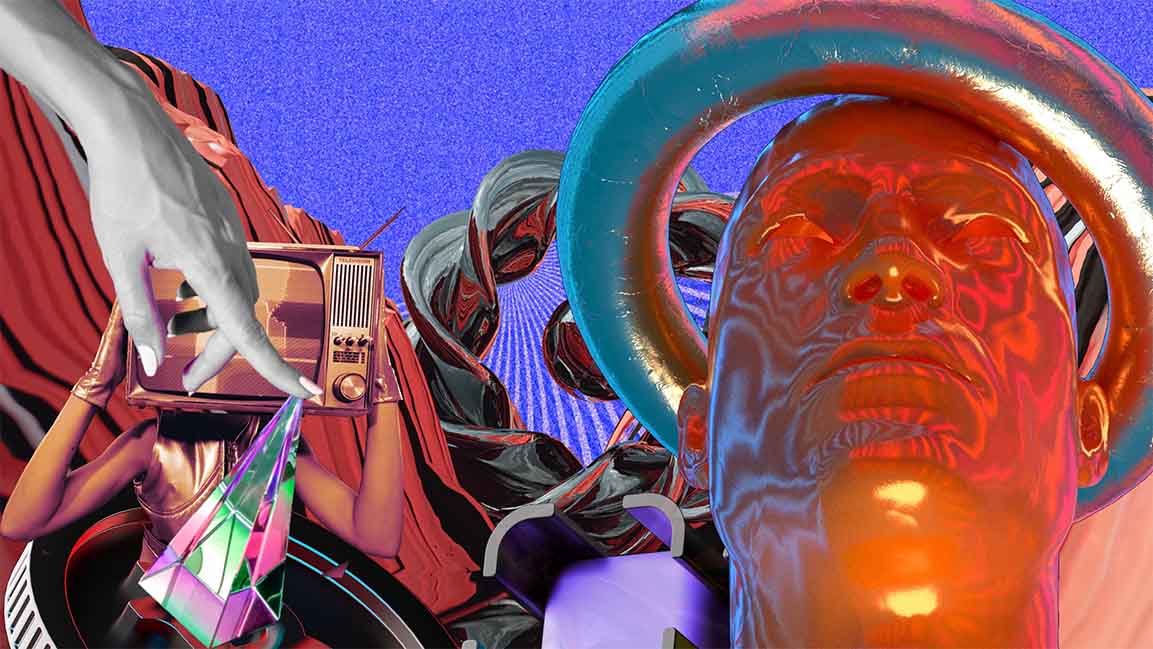- | 9:00 am
NFTs are taking the Middle East by storm. But what do they mean for the future of retail?
Luxury brands have significant stakes in Web3 digital assets, but there are limiting factors.

You may be skeptical of the NFT and Web3 wave, which started in the art and fashion and then washed across non-traditional sectors such as automotive, real estate, and healthcare.
With its use cases rising, NFTs are here to stay. Most recently, Nike unveiled Swoosh, its Web3 marketplace home for all of the sneaker brand’s virtual goods; Adidas unveiled its first interoperable virtual fashion NFT collection, and Burberry partnered with Minecraft, blending physical and digital as part of its ongoing metaverse strategy. Rolex, too, has jumped on the bandwagon.
In the Middle East, the popularity of NFTs is hard to miss. Recently, the postal operator in the country issued NFT stamps to celebrate the UAE’s National Day. Dubai Culture plunged into the world of digital assets with the launch of a MORROW NFT curatorial platform.
Saudi Arabia’s NFT market has recorded strong growth over the last year and is expected to gain further momentum over the next three to four years as the country looks to become a creative hub in the Middle East. Egypt has also had tokenized digital assets, mostly focused on digital real estate, games, and artwork. There has been renewed interest in Arab history, with collections such as Sphynx Cats made of 9,099 NFTs instantly selling out.
While there are several reasons why NFTs are soaring, one overriding factor is their exclusivity. The concept isn’t new. Luxury has thrived on rarity and exclusivity as unique selling points for years. Today, collectors use a service called Rarity Sniper to check the value of more than a thousand NFT collections on Ethereum, Solana, and beyond.
Digital assets are raking in millions, and that begs the question, have NFTs changed the meaning of luxury retail? “On the contrary,” says Deniz Özgür, co-founder of Space Runners, an enterprise that designs digital wearable NFTs.
“NFTs enable digital assets that could not be imitated, owned, and traded, paving the way for especially luxury brands to enter the virtual environment. We expect that this interaction of brands with the virtual world will bring along a period that will trigger innovation and change in every step from production to design and sales.”
“NFTs will enhance the meaning of luxury. While initial NFT applications were often not sustainable and based on hype rather than value, the new tools and techniques are much more promising,” says Karolis Merkys, Head of Product and Digital Transformation, AWR Group.
A DIAMOND IN A ROUGH SITUATION?
With every brand jumping on board the NFT bandwagon, there is a question of whether it’s conducive to growth. According to Mckinsey, Gen Z and millennials will spend five hours a day in the metaverse in five years, where spending is expected to reach $5 trillion by 2030, of which 52% of spending belongs to meta-commerce. “Fashion is expected to be the largest Gen Z spending category in the metaverse,” Özgür says.
From a brand perspective, it makes business sense to invest. But there are limiting factors depending on the size of the brand. “Brands should learn and understand, then experiment and decide if and how to invest further,” says Merkys.
“NFT launch success is tightly linked to the community of NFT holders and the roadmap to continue providing value after the launch. NFT efforts must be taken seriously, as we already have big brands which initially took it lightly, failed, and already came back with much more well-thought-through efforts,” he adds.
“We are mostly in touch with high-end luxury brands and e-commerce companies that see the metaverse as their future, and they are investing in improving their designing, marketing, and loyalty building while pioneering innovation,” says Özgür.
While it may not make sense for smaller brands, “Some have more limited human and financial resources to allocate for metaverse, especially in its early phase,” he adds.
However, “virtual spaces and technology can be a great tool for these brands to leverage innovation and differentiate.”
TO A PHYGITAL FUTURE
Fueling the growth of digital assets is the entry of some of the world’s most influential brands and icons. As per a report, this trend accelerated in 2022, with dozens of renowned fashion and beauty brands establishing a presence on the gaming platform Roblox, designing virtual items, collaborating with existing popular experiences, or creating their own immersive spaces.
Beyond the world of NFT drop, celebrity endorsement, and the craze about ownership, the trend tells of tectonic shifts in the future of retail. A recent report by Chalhoub Group outlined the motivation behind customers purchasing NFTs; while the majority (66%) reported doing it for investment purposes, most consumers expect their favorite brands to be present in the metaverse (87%). The report also found that 80% of consumers would consider buying physical products that include NFTs, and 83% would consider an NFT that allows for redemption for a physical product.
“The e-commerce experience will be moved to the metaverse with gamification. Consumers will use virtual avatars to interact with products through virtual dressing rooms and AR technology,” says Özgür.
The future is phygital, says Merkys. “People will need real clothes, while our avatars will be dressed digitally. The interesting question is: will we reach the point where people value digital assets more than physical ones?”
If we will, it will disproportionately increase the growth of digital parts. “Imagine you’re craving to get that digital Chanel bag and show it to your Minecraft friends or wear it at the Snoop Dog concert in the Sandbox metaverse. And after you purchase it in the metaverse store and start enjoying it immediately, you get a physical one shipped as well in a while, but that feels like just a tiny nice to have, which you store in your closet. Sound’s crazy, doesn’t it?” says Merkys.






































